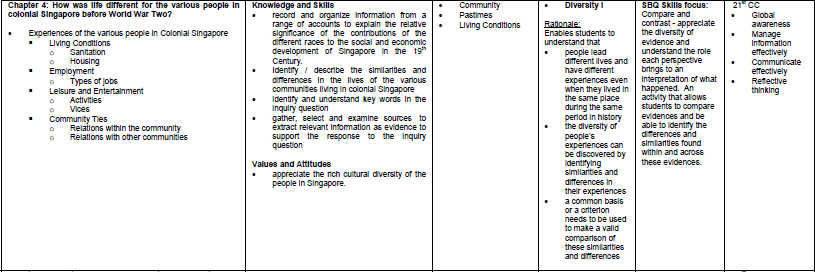- Details
- Category: Chapter 4: How was life different for the various people in colonial Singapore before World War Two?
- Hits: 1040
Source 20: An account by an Indian immigrant in 1928.
Govindasamy’s life was the typical rags-to-riches story common in Singapore. After hearing stories of his relatives doing well in Singapore, he left his South Indian village arriving at the age of 18. He started work at a provision shop in Serangoon Road run by a distant relative. The working conditions were poor but he took the opportunity to learn about running a business. In 1920, he borrowed some money from the rich Chettiars* with his Indian colleagues as sureties* to start a business selling spices, oil and grain. Slowly, he built up the business. He was thrifty and lived a simple life. Eventually, he became a successful businessman.
*Chettiars are Indian moneylenders
*Sureties are people who take responsibility for other people’s debts/undertakings
Source Origin: Muthiah, S., et al. (2000). The Chettiar heritage. Chennai: The Chettiar Heritage.
Use Record: Anderson Secondary School, 2017.
- Details
- Category: Chapter 4: How was life different for the various people in colonial Singapore before World War Two?
- Hits: 1240
Source 19: Adapted from an account by Mr Ng Kar Eng, a rickshaw puller in Singapore in the late 19th century.
Some rickshaw pullers wore rubber sandals, but generally speaking, no shoes were worn. Initially, when I first started to pull rickshaws, the roads were not as good then; it used to be tarred roads and the tar* used to melt under the sun. Sometimes, your feet ran over the burning tar, with the fierce sun shining. The tar stuck to the feet, and you got blisters. It was better in rainy weather because the road was harder, and it was easier to run. The hot weather was more difficult on one’s feet; the road was soft, the tar got soft and melted.
* tar: a dark, thick flammable liquid used in road-making and for coating and preserving timber.
Source Origin: Warren, J.F. (2003). Rickshaw Coolie: A People's History of Singapore, 1880-1940. Singapore : Singapore University Press.
Use Record: Assumption English School, 2017.
- Details
- Category: Chapter 4: How was life different for the various people in colonial Singapore before World War Two?
- Hits: 1252
Source 18: A Samsui woman's account of her life in colonial Singapore.
Back in China, I was out planting, ploughing and harvesting rice in the paddy field. More often than not, bad weather and natural disasters destroyed our harvests and we were left to starve. I was then attracted by the promises of a better life by my cousin who 'made it big' in Singapore. In Singapore, life was tough with long hours of heavy work and hard labour. Our meals were sparse* and I lived in cramped lodging houses in Chinatown with up to 200 other people. My dreams of building a comfortable life with my family have clashed with the reality of low-paying jobs that offer little chance for advancement and security. I'm glad to be able to return home.
*sparse: small in amount.
Source Origin: Kelvin E Y Low. (2014). Remembering the Samsui Women: Migration and Social Memory in Singapore and China. Vancouver, British Columbia: UBC Press.
Use Record: Holy Innocents' High School, 2015.
- Details
- Category: Chapter 4: How was life different for the various people in colonial Singapore before World War Two?
- Hits: 1069
Source 17: A Japanese kwai-po's* conversation with a group of young girls about her life in Singapore.
The high taxation imposed by the Japanese government coupled with our farm's poor harvests had led to the deaths of my younger siblings. There were times when I had nothing but water to drink in the morning and when night fell, I still have not had the neck of a sweet potato to eat. My parents had no choice but to sell me to Singapore as a prostitute. I have never been happier. I no longer have to plough the land and harvest rice with a sickle*. I can wear beautiful kimonos and eat white rice, fish and meat rather than sweet potatoes. I am even able to send home regularly seventy dollars a month to help my family.
Source Origin: Warren, J.F. (1993). Ah Ku and Karayuki-san: Prostitution in Singapore, 1870-1940. Singapore : Oxford University Press.
Use Record: Holy Innocents' High School, 2015.
Page 1 of 5

